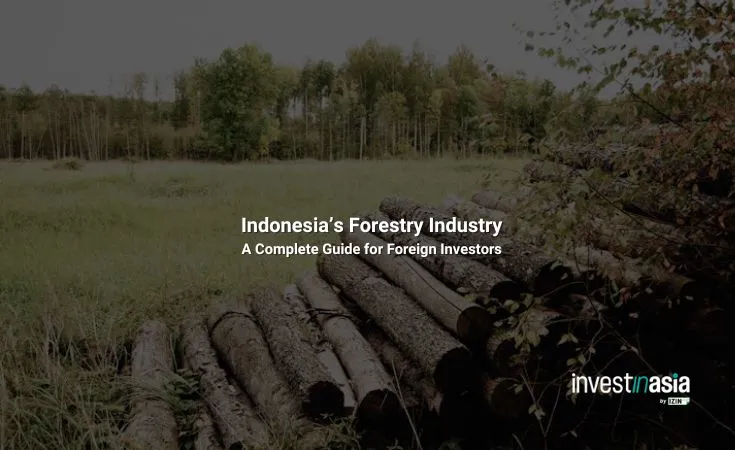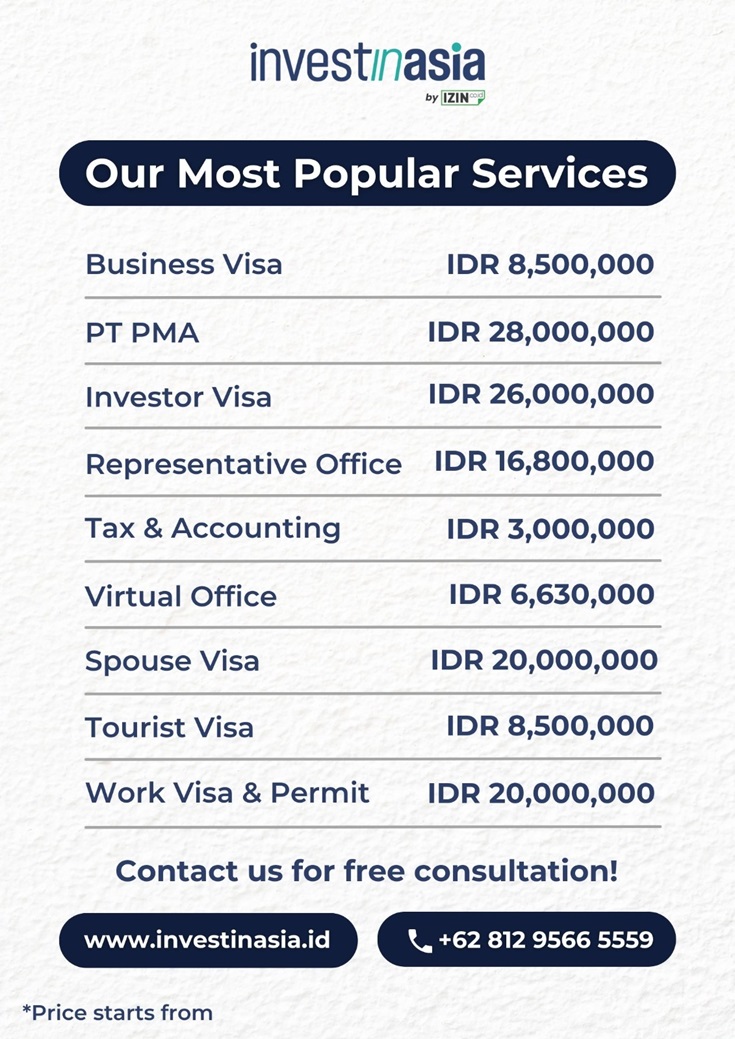Indonesia’s forestry sector ranks among the most significant globally, thanks to its abundant natural resources and critical contribution to environmental sustainability. Covering more than half of the country’s land, Indonesia’s forests provide timber, pulp, and paper, while also playing a critical role in biodiversity conservation and climate change mitigation.
For investors, the sector offers opportunities ranging from industrial timber plantations to carbon trading initiatives.
Also read: Major Industries in Indonesia (Based on Contribution to GDP)
Overview of Indonesia’s Forest Sector


Indonesia manages around 125.8 million hectares of forest. These forests are divided into:
- Production forests for timber and forest products.
- Protection forests for watershed and ecological functions.
- Conservation forests for biodiversity and ecosystem services.
The government controls most of these lands, granting management rights through concession licenses to companies and communities.
The following is an overview of the forestry industry in Indonesia in table form:
| Metric | Value | Source/Notes |
| Total Forest Area | 125.8 million hectares | Ministry of Environment and Forestry |
| Forest Cover Percentage | 50-53% of land area | Based on total land area |
| Production Forest Area | 68.8 million hectares (57%) | Available for timber production |
| Protection Forest Area | 29.6 million hectares (25%) | Watershed and environmental protection |
| Conservation Forest Area | 22.1 million hectares (18%) | National parks and reserves |
| Social Forestry Target | 12.7 million hectares by 2030 | Government social forestry program |
| Social Forestry Allocated (2023) | 6.4 million hectares | Allocated to 10,000+ permits |
| GDP Contribution (2021) | Rp112 trillion (0.66% of GDP) | Finance Ministry data |
| Forest Export Value (2023) | USD 12.76 billion | Central Bureau of Statistics |
| Deforestation Rate (2023) | 259,000 hectares | Global Forest Watch 2024 |
| Main Export Products | Plywood, Pulp & Paper, Furniture | Primary export categories |
| Top Export Destinations | China, USA, Japan, EU | Main trading partners |
Also read: Indonesia Agriculture Industry: Outlook and Potential
Economic Potential and Market Performance
Although forestry directly contributes only about 0.66% to GDP, its broader impact is substantial when downstream industries are considered. In 2023, forest product exports reached USD 12.76 billion, with pulp and paper making up the largest share. China, the U.S., and Japan remain the biggest importers, while the EU recognizes Indonesian timber automatically under the FLEGT licensing system.
The growth of carbon markets also adds significant economic potential, with carbon trading projected to reach Rp1.6–3.2 trillion in 2025.
Also read: Indonesia’s Paper Industry: Outlook and Opportunities
Advantages of Investing in Forestry
- Abundant resources: Second-largest tropical forest nation after Brazil.
- Global recognition: SVLK certification and FLEGT licenses ensure easier access to European markets.
- Government support: Programs like Social Forestry and REDD+ improve sustainability and open opportunities for community collaboration.
- Emerging carbon market: Investors can diversify revenue through carbon credits and environmental services.
Also read: Indonesia’s Investment Incentives for Export-Oriented Businesses
Key Challenges Facing the Sector
Despite its opportunities, Indonesia’s forestry industry faces:
- Deforestation and land-use change.
- Regulatory complexity across national and regional levels.
- Market fluctuations in pulp, paper, and timber exports.
- The need for capacity building in community forestry enterprises.
Also read: 10 Challenges of Doing Business in Indonesia
Government Support and Regulation


The sector is guided by Law No. 41/1999 on Forestry and the Job Creation Law, which streamlined concession permits into the new PBPH (Forest Utilization Business Permit). The Ministry of Environment and Forestry also oversees SVLK certification, ensuring legal and sustainable sourcing for all timber products.
Indonesia is also committed to its FOLU Net Sink 2030, positioning forestry as a central pillar in climate change mitigation strategies.
Future Outlook
The industry’s future depends on diversification, with carbon trading, multi-enterprise forestry, and advanced tools such as SIMONTANA set to transform forest management. With growing international interest in sustainability, Indonesia is positioned to lead in responsible forestry practices while strengthening its export markets.
How Foreign Investors Can Start a Forestry Business in Indonesia
Foreigners can establish a forestry company by:
- Setting up a legal business entity (PT or PMA company).
- Applying for relevant forestry concession licenses.
- Securing SVLK certification for compliance and export access.
- Exploring opportunities in timber, plantations, or carbon markets.
However, navigating Indonesia’s legal framework, multi-layered permits, and regulatory requirements can be complex without expert assistance.
Enter Indonesia’s Forestry Industry without Hassle with InvestinAsia
For international investors looking to enter Indonesia’s forestry industry, proper company registration is the first and most critical step. InvestinAsia’s Indonesia Company Registration Service provides full support in establishing a compliant business entity, ensuring you meet licensing, tax, and regulatory requirements.
With expert guidance, you can focus on building sustainable forestry ventures while avoiding costly delays and legal pitfalls.
We also provide other services such as:
- PMA registration in Indonesia (Foreign Company)
- Representative office registration in Indonesia
- Indonesia Local PT PMDN Set Up
- Indonesian Virtual office setup
- Business registration number in Indonesia
- Business Licenses in Indonesia
- Trademark Registration in Indonesia
- Franchise License in Indonesia
If you are interested in starting a business in Indonesia without hassle, you can start by contacting us for FREE consultation.
FAQs
What percentage of Indonesia’s land is covered by forests?
Approximately 50–53% of Indonesia’s territory, or about 125.8 million hectares, is covered by forests.
What is SVLK certification?
SVLK is Indonesia’s timber legality and sustainability verification system, required for all forest product businesses and recognized internationally.
Can foreigners invest in Indonesia’s forestry industry?
Yes. Foreign investors can establish forestry companies, but they must register a business entity and obtain the required permits.
What are Indonesia’s main forestry exports?
Pulp, paper, plywood, and wooden panels are the leading export products.
What role does forestry play in climate goals?
Indonesia’s forestry sector is central to achieving the FOLU Net Sink 2030, aiming to absorb more carbon than it emits.



